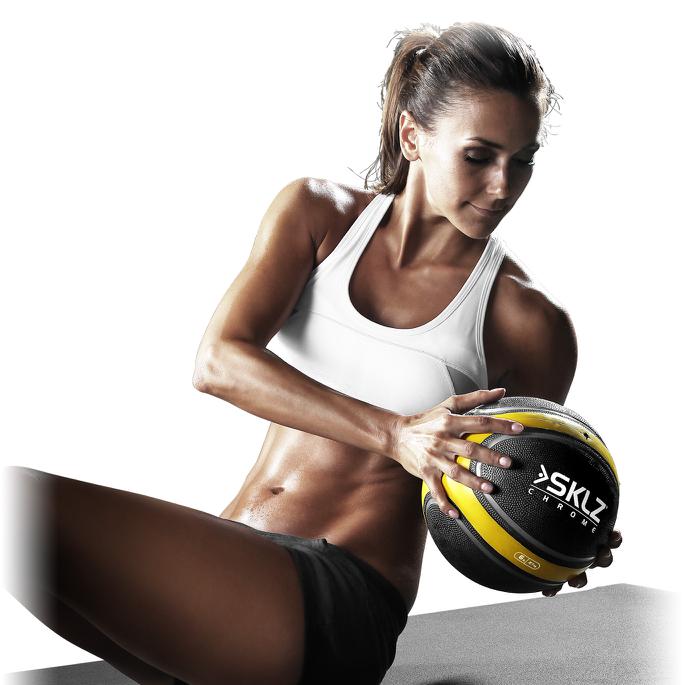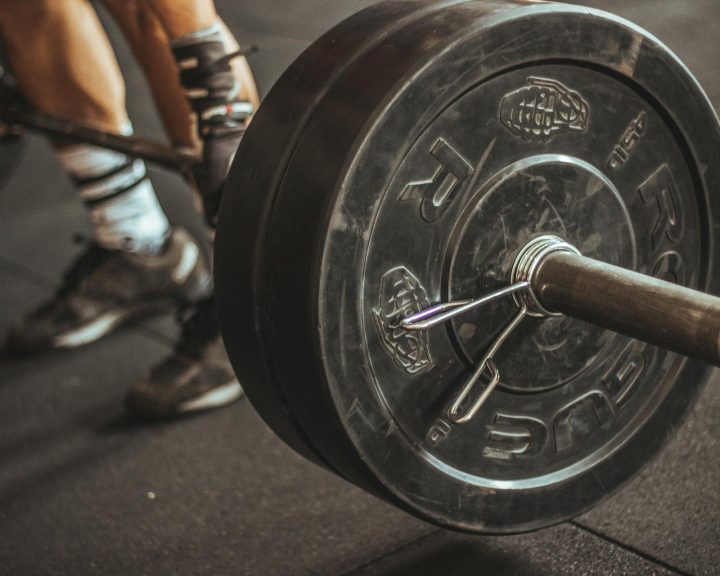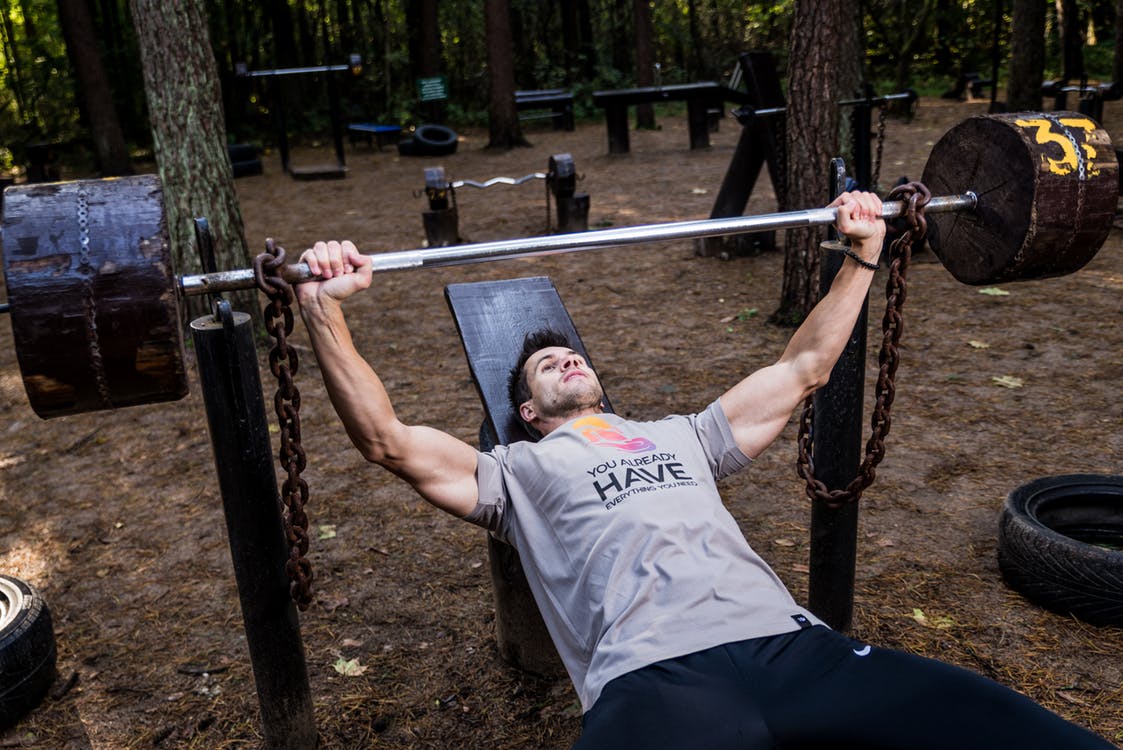The medicine ball is a great tool for the strength and conditioning of athletes. It’s extremely versatile, can be used almost anywhere, provides a great deal of variety to an athlete, and can be used to train almost all of the muscles of the body. This article is going to show you how it can be used to develop power, conditioning, and even sport skills.
Power
Because medicine balls come in a variety of weights, they are ideal for athletes to use in their power training. We spend a lot of time doing various jumps for power training, but we have difficulty incorporating the upper body. This is a shame because we use our upper body, in conjunction with the lower, in a lot of sports movements. What follows are three exercises that incorporate both the upper and lower body into power training.
Backward toss
This exercise is a staple of track and field programs. It is great not only for training but also for testing and relates well to an athlete’s vertical jump. Stand with the feet shoulder-width apart. Keep the weight on the heels. Hold the medicine ball in front of you with straight arms. Tighten your core, stick your chest out, and pull your shoulders back.
From here push the hips back and quickly move into a quarter squat. As you squat down, swing the ball back so that it moves between your knees. From this position, explode upwards and swing the ball up as you do so. Swing the ball until it is released over your head so that if flies as far backwards as possible.
This exercise is normally done for sets of 3-5 throws (throw the ball, walk to it, throw it again, etc.).
Forward toss
This exercise is performed exactly like the backward toss except the ball is thrown in front of the body. This is a great exercise for developing and testing the ability to apply force horizontally.
Chest pass
This exercise is a lot like the basketball skill. This can be done with a partner, against a wall, or against a different surface that will allow the ball to rebound at you. Stand up, feet hip-width apart. Hold the ball against your chest. Your hands should be behind the ball with your thumbs down. Keeping your core tight, push the ball straight ahead of you as hard and fast as possible. When it comes back, quickly catch the ball and fire it back. This is meant to be done extremely fast. Normally this exercise is done for 30-60 seconds each set. Again, the emphasis is on speed!
Conditioning
Because of the inherent variability possible with medicine ball exercises, this is a great tool in metabolic conditioning. This tool can be combined with other modes of training to make extremely grueling and effective conditioning workouts. What follows are three sample exercises that you can use to incorporate into larger conditioning workouts.
Squat to chest press
This exercise combines the lower body movement of the squat with the chest/shoulder/tricep involvement required from the chest press. In addition, the muscles of the core must stabilize the athlete while performing the exercise.
This exercise requires a partner or a wall that will rebound the ball to you. Stand and face your partner. Hold the medicine ball at chest level. From this position perform a chest pass to your partner. Have your partner pass the ball back to your chest. As you catch the ball move down into a full squat. Stand up and pass the ball back. Try to perform the passes and squats quickly!
Lunge with rotational throw
This exercise combines the lower body movement of the lunge, with the core twisting and stabilizing the body, with the upper body supporting and throwing the medicine ball. It requires a partner. Face your partner, lunge forward with your left foot. As you move into the lunge, have your partner pass the ball to your right side so that you must rotate your upper body to the right in order to catch the ball. Without pausing, catch the ball and then pass it back to your partner. Lunge forward with your right foot and catch the ball on your left side, continue alternating until the desired number of throws have been performed.
Medicine ball march
The march is a great exercise for the hamstrings, it’s one I frequently use variations of in athletic warm-ups. The medicine ball also requires core involvement as well as uses the upper body. To perform, stand up and hold the medicine ball overhead. Keeping your knees pretty straight, step forward with your left foot – try to move from your hips. As your left foot steps forward, lean forward and try to touch the medicine ball to your left foot. Stand up. Keeping your knees straight, step forward with your right foot, as that foot steps forward lean and attempt to touch the medicine ball to your right foot. Continue alternating for the desired distance.
What follows is a sample metabolic conditioning workout using the above three exercises with the medicine ball. It incorporates other athletic movements. This is a great recovery or off-season workout.
| Squat to chest press, 20x
Sprint 20 meters Back pedal 20 meters Lunge with rotational throw, 20 meters Shuffle, 10 meters each side Medicine ball march, 20 meters Sprint 20 meters Rest for 2-3 minutes, then repeat |
Sports skills
In addition to being used in a conditioning circuit, medicine balls can also be used for sport skills. What follows are some exercises that I use in basketball, with a little imagination you can come up with sport-specific drills for almost any sport.
Wall dribbles
This is a great exercise for developing upper body endurance and helping with shooting. This exercise should use a smaller medicine ball. Stand close to the gym wall, face the wall, and hold the medicine ball in one hand. Raise that arm up so that it is overhead. From that position, dribble the medicine ball against the wall. After time has elapsed switch arms. This exercise is normally done for time, 30-60 seconds is usually adequate.
Passing drills
Every single passing drill that you use in basketball can substitute a medicine ball. One of my favorites, that emphasizes good catches, fast releases, and paying attention to the hundreds of things that goes on in a game involves lining up six or seven cones across the width of the court. Have the athlete start at one end. They will weave through the cones. As they do this, use the medicine ball and fire chest passes at them. Require them to catch the ball, move their feet, and effectively pass the ball back to you. As they get better speed this drill up, even use multiple people to pass them the ball to keep the drill fast.



